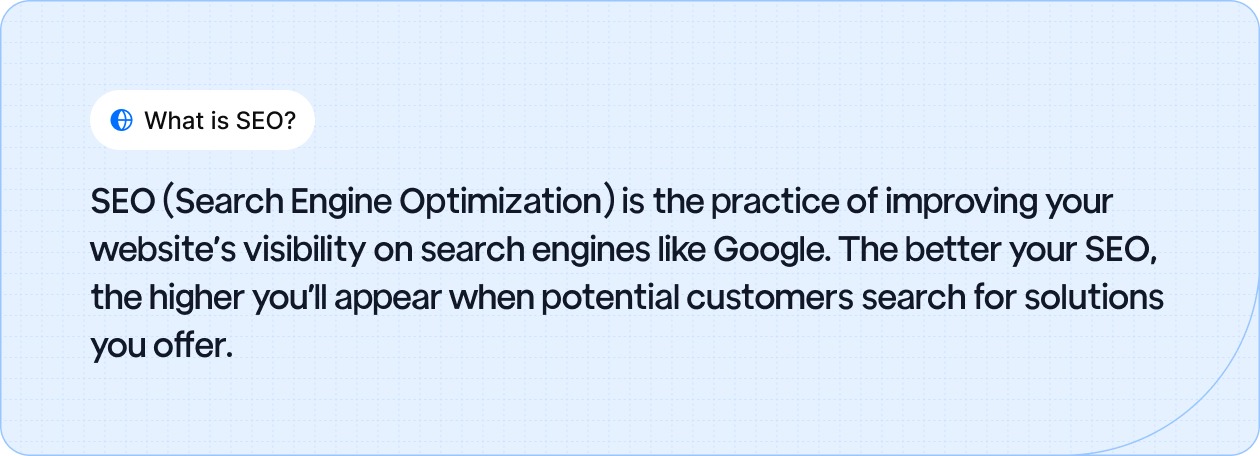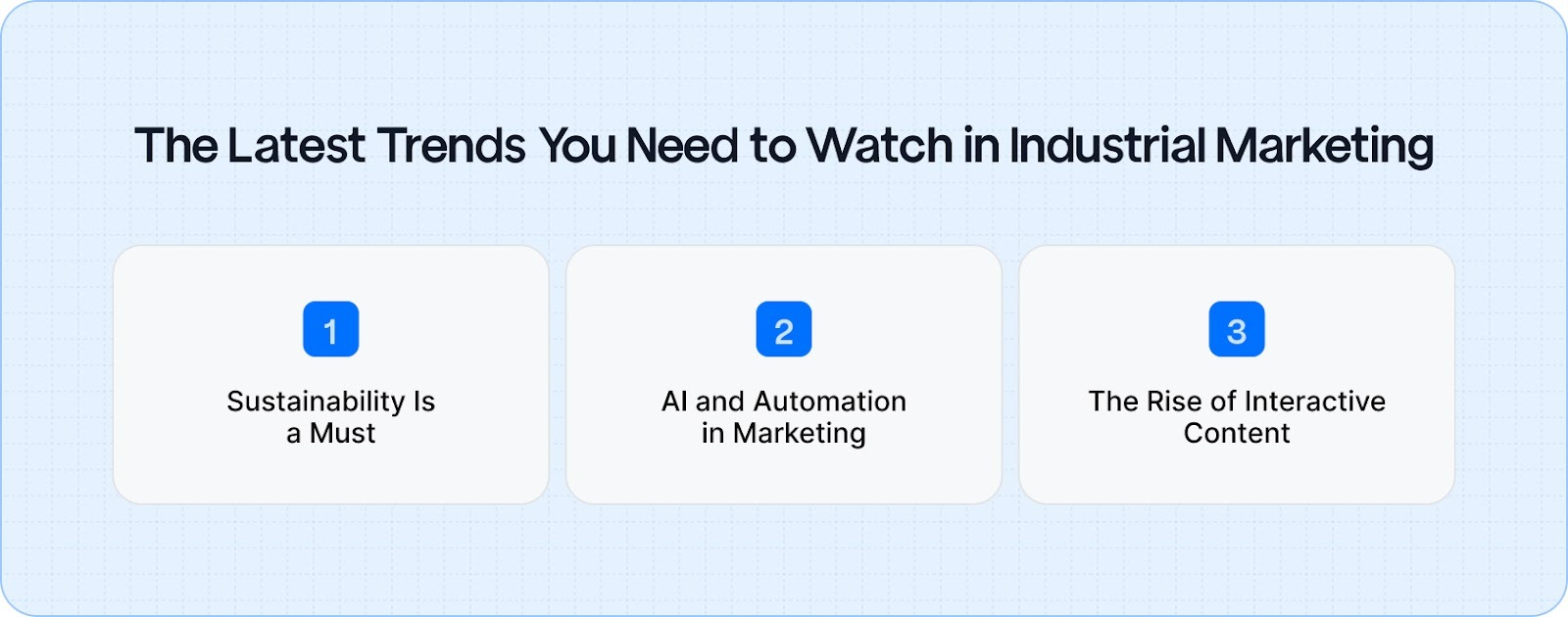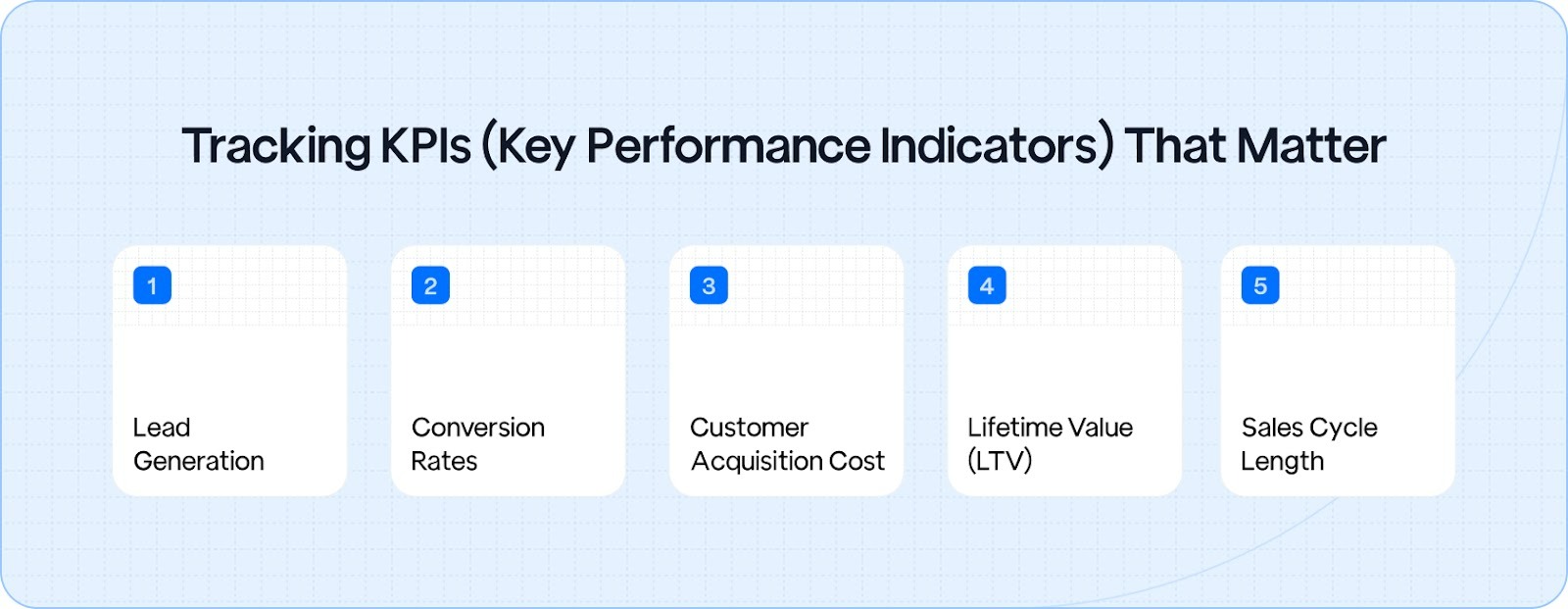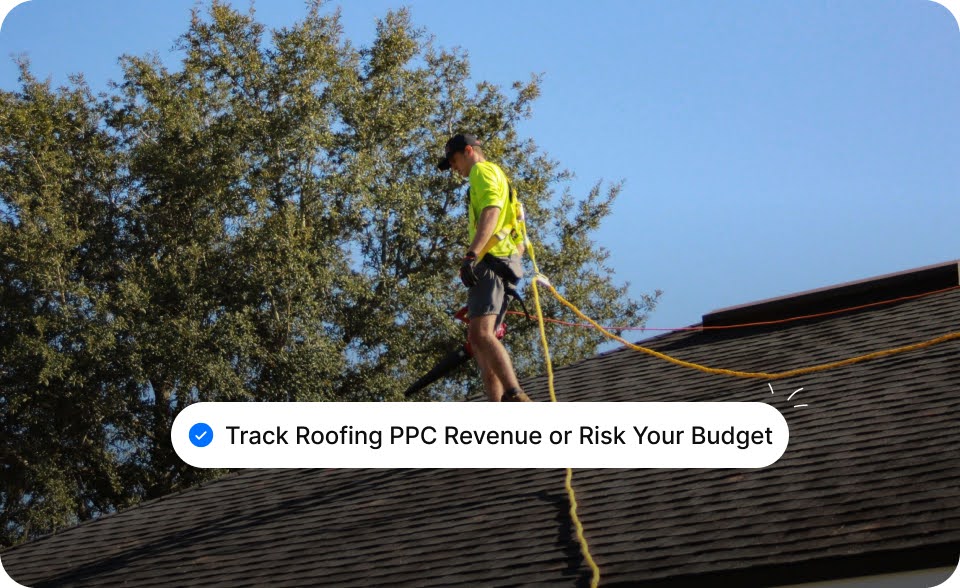Selling industrial products is about targeting the right buyers who understand the complexity of your offerings. You manufacture high-end machinery or custom components, and the real pain point is attracting the right leads.
You're selling technical solutions to procurement teams who need precision, quality, and reliability. The problem? Too often, marketing strategies generate volume over quality, leading to wasted ad spend and sales teams bogged down by unqualified leads.

If you’ve ever had to sift through endless inquiries from unqualified buyers, you understand that generic marketing strategies fall short when it comes to promoting industrial products.
This article will show you how to develop a targeted marketing strategy that gets your products in front of the right decision-makers, those who truly understand the value you bring.
What Makes Marketing Industrial Products Different from Other Industries?
Industrial products often require more technical, niche marketing efforts due to their complexity and specialized customer base. It focuses on selling complex, high-value products to businesses that need them for specific functions.
Challenges in Industrial Marketing:
- Complex Products: Industrial products often have multiple components and technical specs that need to be explained clearly.
- Long Sales Cycles: Sales for industrial products can take months or even years, requiring patience and persistence.
- Niche Audiences: Your customers are often in specialized industries with unique needs, meaning your marketing must be targeted and precise.
Why This Requires a Unique Strategy?
- Precision in Targeting: Industrial marketing is about strategically reaching the ideal buyer at the optimal moment with a message that directly resonates with their specific needs and pain points.
- Education Over Selling: Your products often need a detailed explanation, which means educating your audience is key.
Core Elements of a Successful Industrial Product Marketing Strategy

A successful marketing strategy involves precise positioning, understanding your audience, and crafting educational content that resonates with your target buyers. These core elements help build trust and drive qualified leads.
- Positioning and Branding
First, you need to position your product clearly. What makes it stand out? What value does it bring? Strong branding ensures your product is memorable and easily recognizable.
- Know Your Audience Inside and Out
Create buyer personas, detailed profiles of your ideal customers. Understanding their needs, challenges, and how they make buying decisions will help you craft tailored marketing messages.
- Content That Educates, Not Just Sells
Offer valuable content that helps to solve problems and make informed decisions about your product.
Example:
- Blogs explaining product use.
- Videos showing product demonstrations.
- Case Studies with real-world results.
To further guide you in creating an effective industrial marketing strategy, check out this quick video on the simple steps to develop one.
How to Use Digital Marketing to Transform Your Industrial Product Strategy
Digital marketing tools like ABM, AI-powered SEO, and social media are transforming how industrial products are marketed. Leveraging these tools can enhance your outreach and connect you with key decision-makers more efficiently.
Account-Based Marketing (ABM)
ABM is all about targeting specific, high-value accounts. This means focusing your efforts on a smaller set of prospects who are the best fit for your product. You can tailor your marketing specifically for each of these accounts, ensuring a higher chance of conversion.
AI-Powered SEO and Content Creation
AI tools are revolutionizing marketing by speeding up tasks like keyword research and content generation. You can create high-quality content faster and improve your SEO to rank higher in search results, bringing more targeted traffic.

Maximizing Social Media: LinkedIn and Beyond
Social media platforms like LinkedIn are powerful for connecting with B2B decision-makers. Sharing content, networking with industry professionals, and using LinkedIn ads can drive meaningful leads for industrial products.
Do Traditional Marketing Methods Still Work?
While digital marketing is critical, traditional methods like trade shows and direct mail remain powerful for building relationships and demonstrating products.
Integrating both approaches maximizes your marketing effectiveness.
Trade Shows and Networking

In-person events like trade shows and industry conferences are making a comeback. These are great opportunities to showcase your products, network with potential clients, and build relationships.
But today, you need to pair them with digital efforts for a comprehensive approach.
Direct Mail and Print: Not Outdated, Just Evolving
Direct mail might seem old-fashioned, but it’s still a powerful tool, especially when combined with digital strategies.
Personalized brochures, product catalogs, and postcards can grab attention and drive action when used correctly.
Overcoming Marketing Hurdles in the Industrial Product Sector
Industrial product marketing comes with unique challenges, but with the right strategies, you can simplify complex products and manage long sales cycles effectively.
Overcoming these hurdles ensures your efforts resonate with the right audience.
Simplifying Complex Products
Industrial products often come with technical specs that can overwhelm your audience. The key is to simplify and relate these specs to real-world benefits:
Focus on the customer’s pain points. Explain how your product meets specific needs, saves energy, reduces downtime, and improves safety, without delving too much into technical details.
Handling Long Sales Cycles
Long sales cycles are a given in industrial marketing, but keeping prospects engaged is key:
- Segment your leads: Tailor your communication based on where the lead is in the buying journey.
- Nurture without overwhelming: Send helpful, relevant content like case studies, webinars, and reports to keep the conversation going.
Many in the industry are facing the challenge of reaching the right leads or navigating complex product descriptions.
Check out this Reddit conversation for a broader look at how manufacturers can approach industrial marketing.
The Latest Trends You Need to Watch in Industrial Marketing

Staying ahead of trends like sustainability, AI, and interactive content can give your marketing efforts an edge. Embracing these trends ensures your brand stays relevant and attracts modern buyers.
Sustainability Is a Must
Eco-conscious buyers are more prevalent than ever. Showcase how your products contribute to sustainability:
- Highlight eco-friendly benefits: If your product is energy-efficient or reduces waste, make it a central point in your marketing.
- Certifications matter: Promote any green certifications or eco-labels your products have.
The Rise of Interactive Content
Static content is becoming less effective. Interactive tools engage prospects better:
- 360° product views: Let prospects explore your product virtually.
- Product calculators and quizzes: Help customers calculate ROI or choose the right product based on their needs.
How to Measure Success: Key Metrics for Industrial Product Marketing
Measuring success in industrial marketing means tracking the right metrics to optimize your efforts. Here’s how to focus on what truly drives growth and results.
Tracking KPIs (Key Performance Indicators) That Matter

Focus on key metrics that directly impact your marketing and sales:
- Lead Generation: Track how many quality leads you’re attracting.
- Conversion Rates: Measure how many leads turn into paying customers.
- Customer Acquisition Cost (CAC): Know how much you’re spending to acquire each customer.
- Lifetime Value (LTV): Understand the long-term value of each customer.
- Sales Cycle Length: Track how long it takes to convert a lead into a sale.
These KPIs help you assess the effectiveness of your marketing and adjust as needed.
Tools for Tracking Performance
Use these tools to measure your KPIs:
- Google Analytics: Track traffic, user behavior, and conversion paths.
- HubSpot: Monitor leads, sales, and campaign performance.
- SEMrush: Track SEO performance and keyword rankings.
- LinkedIn Analytics: Measure engagement with your professional audience.
These tools offer valuable insights to optimize your strategy.
A/B Testing and Optimization
A/B testing helps you improve key elements of your marketing:
- Test one element: Focus on a single aspect, like CTAs or headlines.
- Measure results: Track engagement and conversion rates to see what works.
- Optimize: Use the insights to refine your campaigns and improve performance over time.
Start Optimizing Your Industrial Marketing Strategy Today
Industrial marketing demands a targeted approach that combines positioning, account-based marketing (ABM), valuable content, and the right digital tools to drive meaningful results.
If you’re still relying on outdated methods or hoping for a DIY fix, it’s time to shift gears. The real challenge is ensuring you’re reaching the right decision-makers with content that resonates.
FAQs
Q1. What are the key components of an industrial marketing strategy?
A1. An effective industrial marketing strategy includes:
- Target Audience Definition: Identifying and understanding key decision-makers such as engineers, procurement officers, and plant managers.
- Market Research: Analyzing industry trends, competitor strategies, and customer needs.
- Value Proposition: Clearly articulating what differentiates your product in terms of quality, efficiency, or cost-effectiveness.
- Content Marketing: Developing technical content like case studies, whitepapers, and product demos to educate and engage prospects.
- Digital Marketing: Leveraging SEO, email campaigns, and social media to reach a broader audience.
- Sales Alignment: Ensuring marketing efforts support the sales team's objectives and streamline the lead conversion process.
Q2. How does industrial marketing differ from traditional B2B marketing?
A2. Industrial marketing is more specialized, focusing on:
- Technical Content: Providing detailed product specifications and use cases.
- Longer Sales Cycles: Engaging in extended decision-making processes with multiple stakeholders.
- Niche Targeting: Addressing specific industries like manufacturing, automation, or MRO (Maintenance, Repair, and Operations).
- Relationship Building: Emphasizing trust and credibility over transactional interactions.
Q3. What role does content marketing play in industrial marketing?
A3. Content marketing in the industrial sector serves to:
- Educate: Inform potential customers about product applications and benefits.
- Build Authority: Position your company as a thought leader in your industry.
- Engage: Create interactive content like webinars and calculators to involve prospects.
- Support SEO: Improve search engine rankings through relevant and optimized content.
Q4. How can manufacturers effectively use SEO in their marketing strategy?
A4. Manufacturers can enhance their SEO efforts by:
- Keyword Optimization: Targeting industry-specific terms and long-tail keywords.
- Technical SEO: Ensuring website speed, mobile-friendliness, and proper indexing.
- Content Creation: Developing blog posts, product pages, and FAQs that address customer queries.
- Backlink Building: Acquiring links from reputable industry sites to boost domain authority.
Q5. What are the benefits of Account-Based Marketing (ABM) for industrial companies?
A5. ABM allows industrial companies to:
- Personalize Outreach: Tailor marketing efforts to specific high-value accounts.
- Align Sales and Marketing: Coordinate strategies to target and engage key decision-makers.
- Improve ROI: Focus resources on accounts with the highest potential for conversion.
- Enhance Relationships: Build deeper connections with target accounts through customized content and communication.
Q6. How important is sustainability in industrial marketing?
A6. Sustainability is increasingly vital, as it:
- Attracts Eco-Conscious Buyers: Appeals to customers prioritizing environmental responsibility.
- Differentiates Brands: Sets companies apart in competitive markets.
- Complies with Regulations: Ensures adherence to environmental laws and standards.
- Enhances Brand Image: Builds trust and loyalty among stakeholders.
Q7. What metrics should manufacturers track to measure marketing success?
A7. Key performance indicators (KPIs) include:
- Lead Generation: Number of new prospects acquired.
- Conversion Rates: Percentage of leads that become customers.
- Customer Acquisition Cost (CAC): Total cost to acquire a new customer.
- Return on Investment (ROI): Revenue generated compared to marketing expenses.
- Website Analytics: Traffic sources, bounce rates, and user engagement metrics.




















.webp)








.webp)
.svg)


.svg)
.svg)
.svg)







.svg)